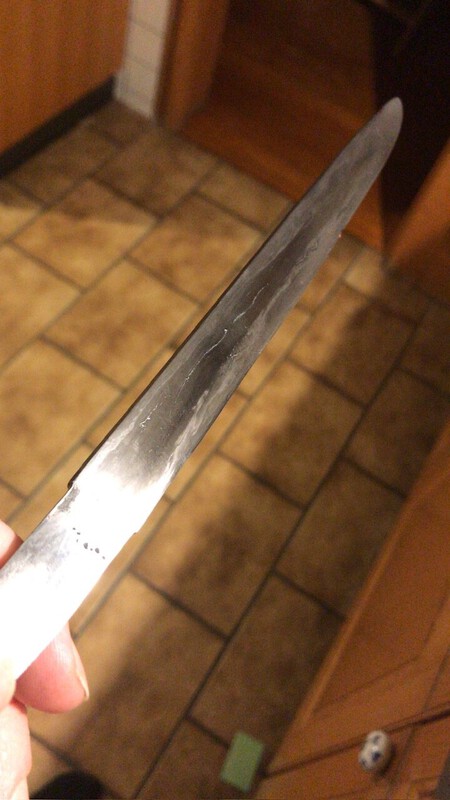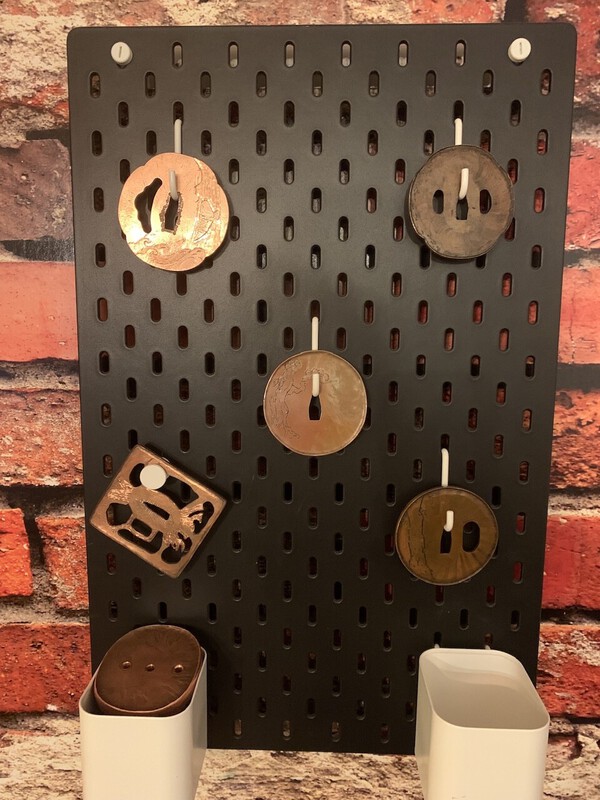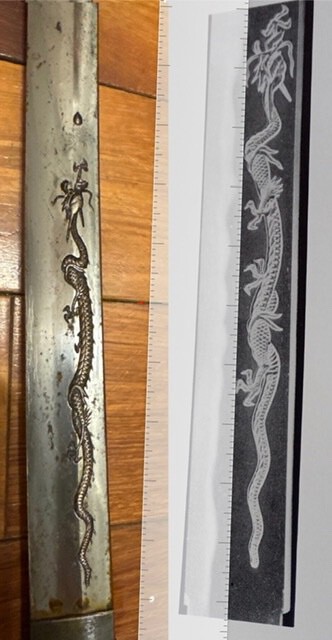-
Posts
878 -
Joined
-
Last visited
-
Days Won
1
Content Type
Profiles
Forums
Events
Store
Downloads
Gallery
Everything posted by DoTanuki yokai
-

Help with Hamon Identification on TADAYOSHI Wakizashi
DoTanuki yokai replied to tbonesullivan's topic in Nihonto
Tadayoshi was already famous when he was alive and some fake signatures are as old as authentic blades. So the patina on the Nakago can be real and old. -
Cut of Nakagojiri. Hamon runs into the Tang. Hi gets flatter on one side and the mekugiana punch in the Hi that was filed flat afterwards.
-

Suishinshi Masahide made in 1806 WW2 samurai sword info
DoTanuki yokai replied to a topic in Nihonto
http://www.nihontocr...hinshi_Masahide.html But I wouldn’t say all the conclusions at the end are correct -

Suishinshi Masahide made in 1806 WW2 samurai sword info
DoTanuki yokai replied to a topic in Nihonto
When Masahide made functional swords that is the highest art after form follows function. Just in case it wasnt mentioned don’t clean the Nakago (tang) of the blade. -
Making such hamon requires very homogenous steel that lacks other features I like but I’m always impressed of the control over the heat some smiths show. This one does not really fit but shows that you could draw pictures with the hamon.
-
I think it is impossible to show all at one picture because to see different things you need different angles of light and from where you look. I have made over 10000 pictures of blades with so many different setups and tried many things and actually I’m at a point where I think pictures that are taken like one would examine a blade bring me the most joy. Then you have to know what you want to show and how to see it in hand then I replace my eye with the camera but my eyes can definetly handle the contrast better then my phone camera can. My DSLR can handle the contrast much better but the whole shot is much more time consuming and static what makes changing angles and get what to want to see a difficult task. I made some pictures last weekend with my phone while examining one of my swords. Espacially for the Jinie I think videos work much better because they are sometimes showing up only in one angle on a konvex surface what makes it impossible to photograph in one picture. Tell me what you think about them thanks.
-
With the additional pictures i would also say it is old and shortned. Really nice find.
-
原 is my guess for the kanji. At first I also thought Gimei Rai kunitsugu but I think it is the 2nd kanji of Fujiwara and the blade is not earlier then edo.
-

Upcoming Bonham's Auction Question/Comment
DoTanuki yokai replied to cluckdaddy76's topic in Nihonto
They only want customers with overflowing pockets to buy some old dinosaur bones for millions that no museum in the world wanted to pay 50k for. I think we can be happy that our art field is so undervalued. -

Thoughts on these Kizu
DoTanuki yokai replied to KyleH's topic in General Nihonto Related Discussion
Just want to clarify that because it sounds a little misleading. Time does not open layers if the blade has ware it has it from the time when It was forged, maybe it is hidden underneath flawless layers but when it shows up after polish it was there from the beginning. -
-
Muromachi Sengo Muramasa but I have no clue wich Generation. I can’t see the boshi or the Jinie and wouldn’t be surprised if it is Koyama Munetsugu
-
I think i see some gaps inside the Hitsuana and Nakagoana that could be signs of a multi layer construction or shadows of the overflowing cloisonne. I dont think it looks fire damaged with the new pictures but more like an early work but i really don`t know much about cloisonne. Here a picture that show the lines that could show the layers. (some of the new pictures show it better i think)
-
I tried to look at it but the pictures kill my eyes Seriously it looks like the Tsuba melts with the background and other LSD Stuff. I cannot say that i can provide any useful information with clear pictures but i certainly cannot with this .
-
Can you show the other side of the Nakago ? Im still not sure if it is shortned or made in this style. Maybe you can see if the Hamon stops at the Hamachi or runs into the Nakago ?
-
Konuka Hada is more about the Jinie that is not visible in this pictures and less about the welding pattern.
-
Maybe the missing Yokote and the thin Mune after the Bo-Hi I would say make this Naginata Zukuri.
-
Got it from Sweden, it’s called SKÅDIS. You can buy as many hooks as you need. (I did not buy enough hooks).
-

Seeking advice on Tanobe & NBTHK different appraisals
DoTanuki yokai replied to atm's topic in Nihonto
Had a crazy thought and the NBTHK tries to preserve the blade as it is with this paper. -

Recent or not so much?!
DoTanuki yokai replied to NewB's topic in General Nihonto Related Discussion
I would say depending on how the blade was made ware can also appear on both sides especially on the edge. What is on the blade would be Haware in my opinion. -
Thanks for this little exercise. Maybe I would have noticed the orientation of the tail when I would have looked at more examples of his work. What could be the reason/meaning for the tail pointing upwards or is this purely for aesthetics?
-
The Art of Tsukamaki is available on Amazon, you can read it for free with Kindle Unlimited Abo that offers a free trial month i think. But if he likes it he should buy it, it is only 26€ and worth it in my opinion.
-
I think you mixed things up suguha boshi is Shinto and keeping the pattern of the hamon also in the Boshi is Koto.
-
Left Dragon skipped leg day ? I would like to see better pictures of both but they already look very different and i dont like the radius of curvature of the left ones body. Edit: I added a Ruler to the picture to show something else I have noticed.
-
Merchants weren’t allowed to wear Katana so this problem is more a Wakizashi problem.

















